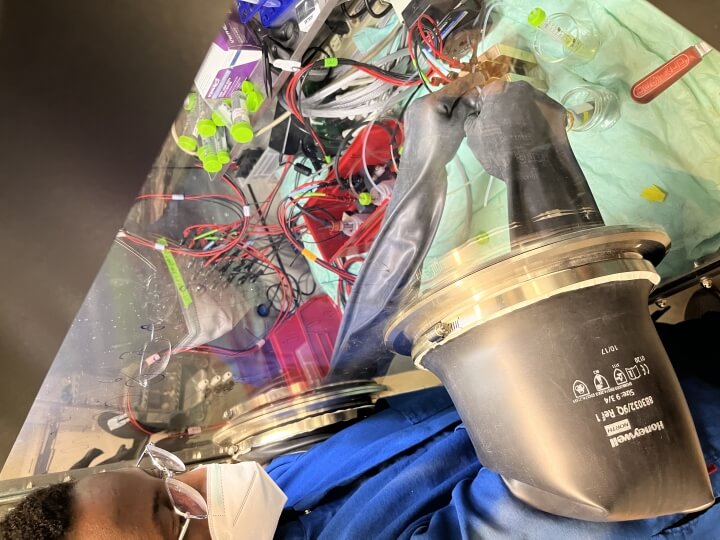Naphtal Haya, S.B. '22, researched ways to improve the energy density of organic flow batteries for his senior capstone project. (Credit: Naphtal Haya)
Engineering Design Projects (ES 100), the capstone course at the Harvard John A. Paulson School of Engineering and Applied Sciences (SEAS), challenges seniors to engineer a creative solution to a real-world problem.
Energy Storage Solution: Flow Battery Posolyte Design driven by Membrane Compatibility.
Naphtal Haya, S.B. ‘22, biomedical engineering
Where’d your project idea come from?
Solar and wind power is becoming more affordable, and is therefore experiencing high growth. However, sunlight and wind speed can vary throughout the day, making renewable energy unreliable and thereby necessitating energy storage solutions. My client, the Aziz Group at SEAS, develops aqueous organic redox flow batteries (AORFBs) that could be a potentially low-cost energy storage solution due to their use of cheaper organic and metal-organic materials. However, the energy density of AORFBs needs to increase if flow batteries are to compete against lithium-ion batteries in stationary storage applications. I therefore decided to tackle the issue of low energy density of AORFBs for my project.
Which specific area of organic flow battery development did your project focus on?
The Aziz Group primarily focuses on the negative electrolyte. My project aims at developing new positive electrolyte compositions that increase the energy density, voltage efficiency and energy efficiency while minimizing the cost. We showed that minimizing the concentration of the supporting electrolyte minimizes battery cost. We used E-620K membranes to develop models that could inform the design of positive electrolytes with desired performance characteristics.
What part of the project proved the most challenging?
Quantifying the uncertainties in the results was very tedious.
What part of the project did you enjoy the most?
Building the cost model was very fulfilling to me since the model is a figure of merit for the experimental data I had generated.
What skills did you gain through this project?
I learned a lot about experimental design in that I was conducting the lowest number of experiments possible to gather all the required data. I also learned how to use the LaTeX presentation software for my final report, and had to develop presentation skills that could convey my project to audiences unfamiliar with flow batteries.
Press Contact
Matt Goisman | mgoisman@g.harvard.edu
